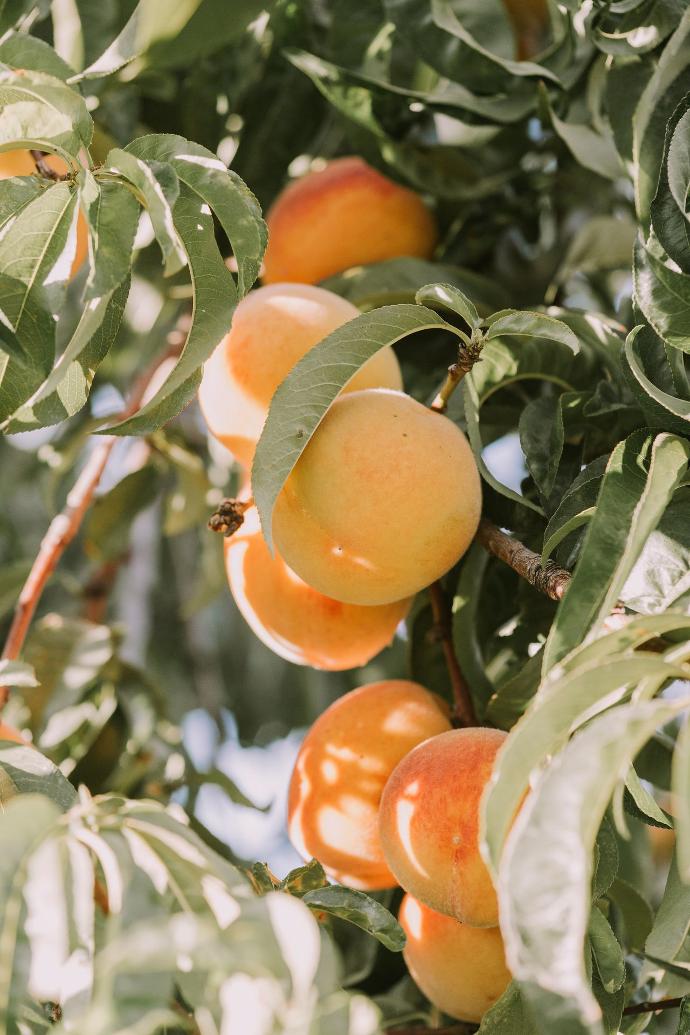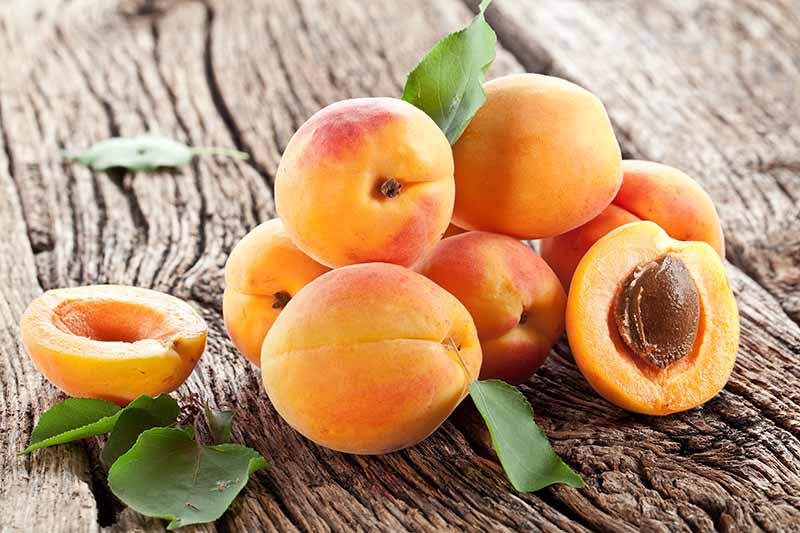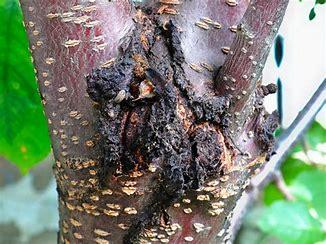Apricot Plant
Apricot trees, 15-20 feet tall in Zones 5-8, exhibit moderate growth in well-drained soil and full sun. They produce tasty and edible apricots.

Habit
Tree
Height
8-12 m
Growth
Moderate
Soil
Well Drained, sandy loam
Shade
Full Sun
Moisture
Moderate
Edible
Yes
Medicinal
Yes
Origin
China
Climatic Condition
Temperate
Temperature (°)
16-24°C
Humidity (%)
50-70%
Potting media
Garden soil
Fertilizers
Balanced NPK
Watering
Moderate watering; drought-tolerant once established
Plant Weight
4-8 kg
Flowering Time
Spring
Soil Ph level
6.0 - 7.5
Water Ph level
6.0 - 7.0
Soil EC
Medium
Yield Per Plant
10 to 100 kg per tree
NPK ratio
8:08:08
life Span
40-150 years
Health Benefits
High in vitamins A and C; supports eye health.
Suggested Grow Media or Potting Mix ?
50% loamy soil, 30% compost, 20% sand
Suggested Fertigation/Fertilizers
Fertilize in early spring with a balanced, slow-release fertilizer.
Common Diseases and Remedies
Brown Rot, Bacterial Canker, Apricot Pox Virus, Powdery Mildew, Gummosis.
Brown mushy spots on fruit Sunken lesions on bark, dieback Ring spots on fruit, reduced fruit quality White powdery spots on leaves Oozing gum from branches and trunk
Remove infected fruit, improve air circulation Prune affected branches, improve air circulation Remove infected plants, control aphid vectors Neem oil, potassium bicarbonate Prune out infected areas, improve air circulation
Fungicides with captan or thiophanate-methyl Copper-based fungicides None effective, focus on prevention Sulfur-based fungicides Fungicides with copper
HEALTH BENEFITS
- 1. Rich in Antioxidants
- Apricots contain beta-carotene, vitamin C, and flavonoids, which help protect cells from oxidative stress and reduce the risk of chronic diseases.
- 2. Supports Eye Health
- High in vitamin A and lutein, apricots help improve vision and reduce the risk of age-related macular degeneration.
- 3. Promotes Skin Health
- Vitamin C and antioxidants in apricots help protect the skin from damage, improve elasticity, and promote a youthful glow.
- 4. Aids Digestion
- Apricots are a good source of dietary fiber, which promotes healthy digestion, prevents constipation, and supports gut health.
- 5. Boosts Heart Health
- Potassium and fiber in apricots help regulate blood pressure, lower cholesterol levels, and reduce the risk of heart disease.
- 6. Strengthens Bones
- Apricots contain calcium, phosphorus, and magnesium, which support bone strength and prevent osteoporosis.
- 7. Supports Hydration
- With a high water content, apricots help keep the body hydrated, especially in hot weather.
- 8. Regulates Blood Sugar
- The fiber in apricots helps slow down sugar absorption, making them a good choice for people managing diabetes.
What Is An Apricot Tree?
An apricot tree is a small, flowering tree that belongs to the Rosaceae family, the same family as roses, apples, and cherries. It is native to Central Asia and has been cultivated for thousands of years. Apricot trees are known for their delicious, orange-coloured fruit, which can be eaten fresh, dried, or canned. They are also a good source of vitamins A and C. Apricot trees typically grow to be about 20-25 feet tall and have a spreading canopy. The leaves are oval-shaped and have a serrated edge. The flowers are white or pink and bloom in early spring. The fruit is a drupe, which is a type of stone fruit. It is round or slightly oval-shaped and has a smooth, skin. The flesh is yellow or orange and has a sweet, tart flavour .

What Are The Different Types Of Apricot Plants?
1. Common apricot (Prunus armeniaca)
This is the most widely grown species of apricot. It is native to Central Asia and has been cultivated for centuries.
2. Japanese apricot (Prunus mume)
This species is native to Japan and China. It is primarily grown for its ornamental flowers, but the fruit can also be eaten.
3. Black apricot (Prunus dasycarpa)
This is a hybrid of the common apricot and the cherry plum. It has dark purple skin and flesh, and a tart flavour.
4. Blenheim
This cultivar is known for its large, sweet fruit. It is also relatively cold-hardy.
Gold cot: This cultivar has deep orange skin and flesh. It is a good choice for fresh eating or drying.
5. Moorpark
This cultivar has a rich, complex flavour. It is a late-ripening variety, so it is not as widely grown as some others.

How to care for Apricot Plant ?
1. Location
Choose a sunny spot with well-drained soil, ideally slightly acidic to neutral. Avoid frost-prone areas as they bloom early.
2. Sunshine
Apricot is a warm, yellowish-orange colour reminiscent of a bright, sunny day. It evokes feelings of joy, warmth, and optimism.
3. Soil
Apricot trees thrive in well-drained soil with a slightly acidic to neutral pH (between 6.0 and 7.0).Loamy: A mixture of sand, silt, and clay particles offering good drainage while retaining adequate. Organic matter : Incorporate compost, aged manure, or other organic matter to improve soil structure, drainage, and nutrient retention . warmth, and optimism.
4. Hydration
Young trees: Water more frequently, about every 2-3 days during hot weather.

5. Nourishment
Apricot trees require specific nutrients to grow healthy and produce delicious fruit. Here's a comprehensive guide to nourishing your apricot plants .
Nitrogen (N): Crucial for leaf growth and overall plant health. Young trees benefit from more nitrogen, while established ones need less.
Phosphorus (P): Promotes root development and fruit production.
Potassium (K): Enhances disease resistance, fruit quality, and winter hardiness.
Micronutrients: Iron, zinc, calcium, and others are needed in smaller amounts but play essential roles in various plant functions.
6. Issues
Unfortunately, apricot plants face a variety of potential issues, both from diseases and pests, as well as environmental factors. Here's a breakdown of some common issues you might encounter .
What are the Benefits of Apricot Plant ?
Apricot plants offer a multitude of benefits, both tangible and intangible, making them a valuable addition to gardens and orchards. Here's a breakdown of some key benefits:
Dietary: Rich in nutrients: Apricots are packed with vitamins (A, C, E, K), minerals (potassium, iron, calcium), and fiber, essential for human health.
Antioxidant properties: The high content of antioxidants like beta-carotene and vitamins C and E helps fight free radicals and protects against various chronic diseases.
Economic: Fruit production: Apricot trees can produce abundant fruit, providing a source of fresh, delicious food for personal consumption or commercial sale.
Income generation: Selling apricots at farmers' markets or through other channels can generate income for growers.

FAQs About Growing Apricot
1. How to maintain apricot plants?
Maintaining apricot plants involves a well-rounded approach combining proper planting, care, and protection. Here's a comprehensive guide to keeping your apricot tree healthy and productive .
Planting: Location : Choose a sunny spot with well-drained soil (slightly acidic to neutral, pH 6.0-7.0). Avoid frost-prone areas as they bloom early.
2. What are the uses of apricot plants?
Apricots offer a wide range of uses beyond their delicious taste.
Nutrition: Abundant in vitamins A, C, and fiber, supporting immune function, digestion, and eye health.
Antioxidant Powerhouse: Beta-carotene and other antioxidants protect cells from damage and may fight chronic diseases.
Preserved: Jams, preserves, and compotes add fruity flavour to toast, pastries, and cheese platters.
3. Can I grow apricot indoors?
Growing apricot trees indoors is possible, but it presents significant challenges and is unlikely to lead to successful fruit production. Here's a breakdown of the limitations and potential considerations:
Light requirements: Apricots need 6-8 hours of direct sunlight daily, which is difficult to achieve consistently indoors, even with south-facing windows and grow lights.
4. Which pot is best for growing apricots?
While growing apricot trees indoors presents challenges for fruiting, choosing the right pot can still be crucial for their overall health and growth.
5. From where can I shop for apricots?
You can buy apricots from a variety of places, depending on your preferences and needs. Here are some options:
Farmers markets: Farmers markets are a great place to buy fresh apricots directly from the farmers who grew them.
Grocery stores: Most grocery stores sell apricots, either fresh or dried. Fresh apricots are typically available in season, from late spring to early summer.



